One of the greatest joys of owning a dog is taking walks together. However, it’s hard to enjoy it when your dog pulls you like a sled in a race they cannot afford to lose. Do you wish walks didn’t remind you of an unpleasant version of “Red light/Green light”? Then your dog needs to learn loose leash walking skills!
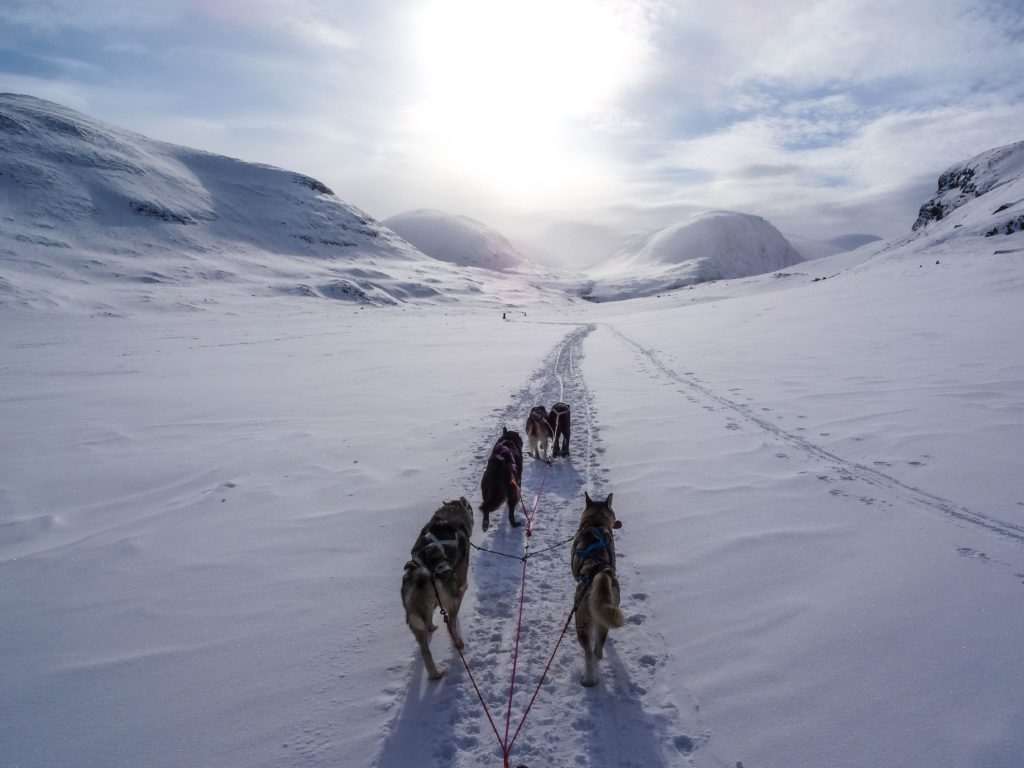
Not pulling on leash is one of the most difficult behaviors for your dog to learn. They aren’t born understanding how to walk nicely! Loose leash walking is also one of the most common behaviors I’m asked to help with. I completely get it; being pulled is incredibly frustrating!
Walking your dog SHOULD be an enjoyable time but that’s impossible when you’re being pulled down the street.
I’ve taught countless dogs to loose leash walk (even ones that initially pulled my arm off). I can assure you that with patience every dog can learn how to be an enjoyable walking partner! Even better: you can teach your dog not to pull using positive methods only. I am not a trainer who suggests using choke chains, shock collars, or other aversive tools. If you wouldn’t use something on a toddler I do not think you should use it on your dog.
There is a lot of incorrect information stating that your dog is trying to show dominance or control by pulling on leash. These are not true at all. All pulling means is that your dog has not been taught polite boundaries and they’re currently more focused on the environment than on you. That’s normal! It’s our job to teach our dog what we expect on walks.
Unfortunately, these misconceptions have made people believe that their dogs are “being bad” when they pull. This has caused many owners to have zero patience while teaching loose leash walking, and to punish the dog for pulling.
I’ve seen other trainers suggestion punishments that range from mildly aversive techniques to outright animal abuse. As a positive trainer, I’m against all of them. I have taught countless dogs to walk politely on leash. I want you to know you can absolutely 100% get your dog to walk nicely using positive training methods.
Fair warning- this article is intentionally long.
I found myself disappointed when reading other trainers articles on teaching loose leash walking.
Many would quickly suggest “5 steps to make your dog stop pulling” or something similar. I never felt they were steps a dog owner could ACTUALLY follow to teach loose leash walking. They simply weren’t comprehensive enough to be helpful.
So, I wrote my own!
Think of this as a comprehensive guide to everything you need to know about teaching your dog not to pull on the leash. Going for a pleasant walk with your dog is one of the best ways to bond. I want everyone to be able to enjoy walking their dog!
I strongly suggest reading the full article and not skipping sections! Everything is written for a reason and works together to help you solve your dogs pulling.
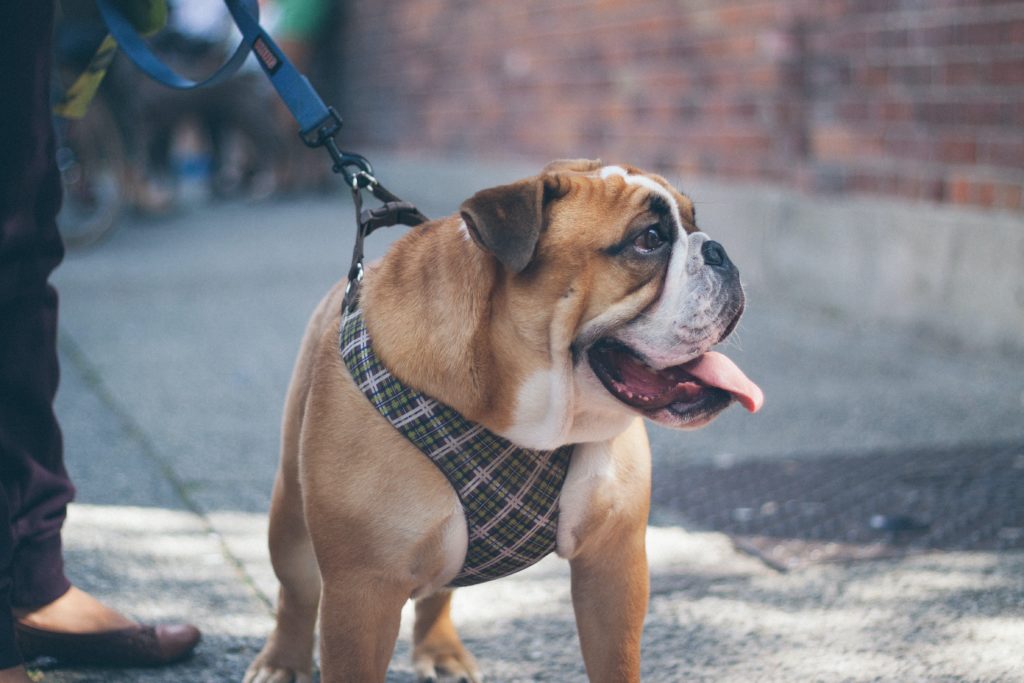
Things we will cover in this article:
- Why dogs pull on leash (No, it’s not dominance or them being a jerk)
- How dogs learn. What your options are for training?
- 3 things you should teach your dog BEFORE starting loose leash walking (these will save your arms)
- The difference between heeling and loose leash walking
- Teaching your dog not to pull on leash: Training your dog to heel and loose leash walk
- Tips for trouble shooting issues you may have
Why does my dog pull on leash?
Despite common thought, your dog pulling on leash has nothing to do with dominance, control, or being a jerk in any way.
The real reasons are much more simple than that:
1. Not enough exercise
Most dogs are not sufficiently exercised for their breed so they have a lot of energy to burn. For many dogs their ~30 minute walk is their only chance to exercise that day. That’s simply not enough. Not even close.
It’s not reasonable to expect your dog to walk nicely beside you if they have tons of pent up energy. If you want to be successful, make sure you tire your dog out sufficiently before teaching loose leash walking. Try letting them run off leash, chase a ball or frisbee, or go to a dog park. If you don’t have the time to exercise them yourself hire a dog walker or put them in doggy daycare. Providing adequate exercise is part of being a responsible dog owner. Research your breed and make sure you’re actually meeting their needs before you expect the dog to do something for you.
2. Humans are slow
Most dogs naturally walk faster than their humans.
Imagine taking a turtle out for a walk. At some point you’re probably going to get bored and want to move faster, right? To dogs, we’re the turtle.
Recognize that it’s HARD to slow down your natural pace. Be empathatic to how much effort this will require for your dog and how unnatural it is for them.
Can they learn? Absolutely.
3. Outside smells amazing
Time for some truth.
Let’s say you’re hanging out with a friend when you hear your phone buzz. Would you be tempted to look even though you know it’s rude to be on your phone during hangouts?
Or another example: How difficult would you find it to sit at your desk working if there was a tv show you really enjoy playing on a screen near you? Would you get distracted and start watching the show rather than working?
For dogs, outside sights and smells are equally distracting during the “job” of walking politely.
On average dogs have 50x the number of scent receptors and 40x more space in their brain for processing smells than humans do.
We can’t even comprehend it, but dogs can smell things diluted to 1-2 parts per TRILLION.
It may just look like a patch of grass to you but to a dog it’s nose bliss.
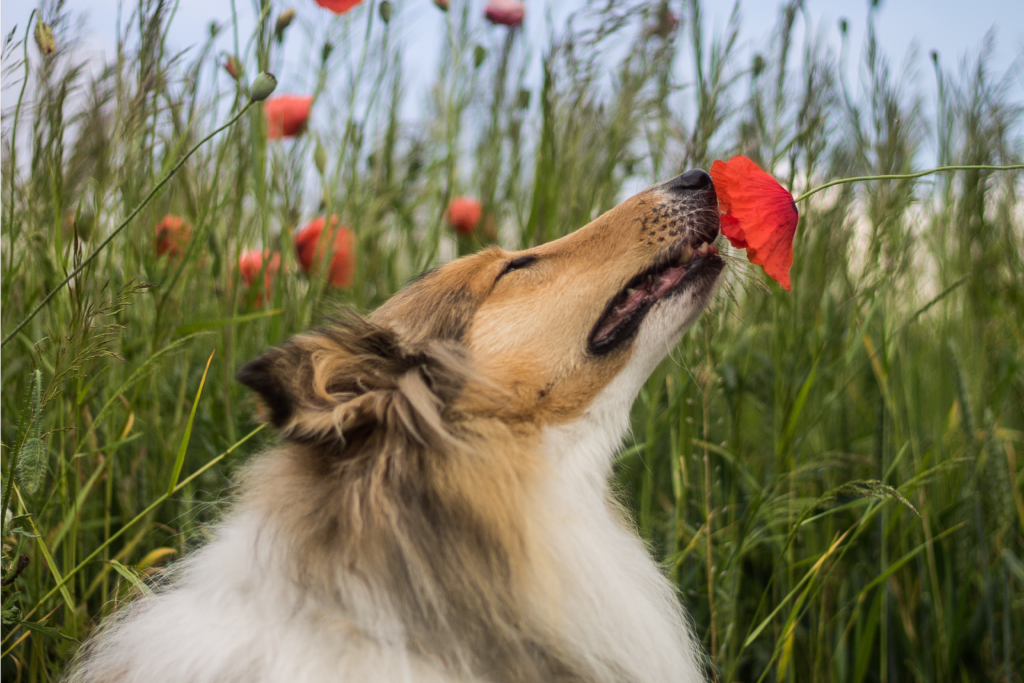
However, this also means that scent can actually be a reward for dogs because sniffing is so enjoyable. If your dog has been pulling you over to smells for months or years, realize to them this pulling behavior has been rewarded (by getting to smell). It’s going to take some time and new rewards to change that behavior.
How do dogs learn?
If you want to do a deep dive into the brains of dogs and how they learn, read the article linked below.
In basic terms, there are two ways to train a dog:
- Reward behaviors that you want repeated (such as giving a treat for walking nicely or looking at you)
- Punish behaviors that you want to stop (such as using a prong collar when the dog pulls)
As a positive trainer I feel it’s our responsibility to teach our dogs what we actually want from them. I dislike training that focuses on punishing the dog until they guess what we want. Can you imagine if your parents or boss expected you to learn that way? How stressed would you be? It’s your responsibility to teach your dog what you want from them.
Punishment based techniques emphasize what not to do while positive training teaches dogs what to do.
If you want to teach your dog not to pull on leash you’ll need to start in an environment where they can be successful. Why? Because there needs to be moments you can reward them for! For many dogs, this means starting loose leash training inside the home where they’re least distracted.
It can be difficult to understand how the setting affects whether your dog can do what you ask.
Let’s use an example.
Do you know how to say your ABC’s? That’s right- I’m asking if you know the alphabet.
If I asked you to recite the ABC’s in your head right now I suspect you could do it. Awesome!
That’s the distraction level of asking your dog to heel indoors.
Now what if I asked you to go tell your spouse or kid the ABC’s? Little awkward, but I’m sure you could do it.
That’s the equivalent of asking your dog to heel in your backyard. They’re comfortable there, but it’s a bit more distracting.
Now what if I plopped you on a stage in front of 10,000 people and asked you to sing your ABC’s into a microphone?
You’d probably be so overwhelmed that you’d forget how to speak at all. I know I would.
That’s the equivalent of asking your dog to walk nicely in an environment with tons of distractions.
How stressed would YOU feel if you were threatened that there would be punishment if you didn’t say your ABC’s properly in that scenario? That’s the equivalent of punishing your dog for not being able to “perform” in a situation that you haven’t given them time to get used to. It’s not fair, and it is not a good way to train.
Do not punish your dog for having an emotional response or getting overwhelmed in a more difficult setting!
It is also not effective positive training to put your dog in a situation where they’re too overwhelmed to learn and then try to control them with a treat.
In order to use positive reinforcement you need to start in an environment where they CAN be successful. Let there be opportunities for praise and reward so they learn your expectations.
You might know how to say the ABC’s, but the context of where I’m asking you to say them changes your chance of success. Dogs are no different.
Build up the difficulty slowly and give your dog a chance of cementing their skills.
They can learn to walk nicely in highly distracting environments, but that isn’t going to happen overnight.
3 things to teach your dog BEFORE you start loose leash walking:

Warning- do not skip these skills and jump into loose leash training!
These skills will help your dog learn impulse control and how great it is to focus on you. When you eventually start loose leash walking in more distracting settings these skills will work wonders for keeping your dog focused. (Hint: A focused, engaged dog is way less likely to pull!). Master these skills to save yourself frustration & a sore arms.
I’ve included a brief description of why each skill is necessary below and linked to a tutorial.
I suggest practicing these skills for at least a few days BEFORE starting any loose leash walking training. Get your dog solid on them!
Sit
“Sit” is a basic obedience command that every dog should know. It’s helpful when teaching loose leash walking as a transition between heel/ok or as time-out break in distracting settings.
Focus
Every dog should learn the “focus” command. Teaching a dog to check in with you is an important building block for more advanced obedience skills and overall bonding.
Focus teaches your dog that awesome things happen when they look at you. Eye contact with your dog is crucial for communication!
In distracting settings a well trained “focus” can help calm your dog and get them refocused on you.
Leave it
“Leave it” is an essential skill. It’s incredibly useful during distraction training (like loose leash walking), but it can also save your dogs life.
Puppies and dogs notoriously try to gobble up random things they find on the ground. A solid “leave it” can save your dog from ingesting something dangerous. You want to be able to communicate to your dog to leave something alone without needing to physically restrain them.
“Leave it” is a promise to your dog that if they do not grab or engage with the thing they’re interested in, then you’ll give them something amazing instead.
The difference between heeling and loose leash walking:
The difficulty with discussing loose leash walking is that everyone defines it differently. In my opinion there are two different ways I’ll walk a dog: in a perfect heel or loose leash. I like and suggest using both!
Heeling:
To me, heeling means the dog walks at your side without either falling behind or advancing past your knee. I personally prefer dogs walking on my left side, so that is what I teach.
My expectations and boundaries in a heel are much more strict than during loose leash walking. I want the dog exactly at my left side walking my pace. During a heel I do not allow sniff breaks or greetings of other dogs.
If that all sounds incredibly strict: you’re right! It definitely is.
Teaching your dog to heel is an amazing way of teaching boundaries and expectations while the dog is learning. It has very clear rules, and the dog often understands them quickly. While teaching your dog not to pull on leash I suggest using “heel” about 50% of the time. It communicates clear boundaries and rules to the dog. Once a dog is fully trained I’d suggest keeping them in a strict heel ~10% of the time or less. It’s a valuable skill for walking on busy sidewalks or other highly distracting settings where the dog needs to “behave”. It’s too strict for full time use but it’s a valuable skill to learn & maintain.
Below is a video of a dog I trained named Kiki. She pulled so badly that her owners were concerned about walking her in the winter! It only took about a week to get her to heel like you see in this video. Positive training works!
However, I also believe that walks should be fun for the dog! As your dog is more trained you should increase the amount of time they’re walked with a loose leash rather than a perfect heel. Loose leash walking allows them the freedom to sniff and be a dog! Remember: the walk should be just as much for your dog as it is for you.
Loose leash walking:
Once a dog is trained to heel I suggest transitioning to loose leash walking the majority of the time.
I suggest using a 6 ft leash for walks. You want a leash long enough that the dog has freedom and the ability to sniff. Let them be a dog! However, I strongly advise against retractable leashes!!
So what is loose leash walking?
I define loose leash walking as my dogs ability to go wherever they want within the boundaries of the 6 ft leash. There cannot be pressure or leash pulling, but otherwise they are free to roam. If the dog wants to sniff and they do it politely (without pulling), I stop and let them! Sniffing is healthy and normal activity for a dog. However, if the sniffs last an extended period of time and I want to walk again, I expect the dog to join me with just a verbal cue. Neither you or your dog should be pulling each other.
Watch Kiki loose leash walk in this video. I let her sniff something she’s interested in, then without any leash tension I get her to walk with me again when asked.
Training your dog to heel and loose leash walk using positive reinforcement:
Training your dog to heel or loose leash walk requires patience but it’s so worth it. I take my dog Neirah with me everywhere. She walks so beautifully that I rarely think about managing the leash. Being able to get lost in your thoughts and relax on walks is a wonderful thing. I sincerely want that for you and believe you can get there! I’ve helped countless dog owners teach their dogs not to pull. I can help you too.
Every dog has the ability to walk nicely on leash, they just need time to learn! You want to build an association that awesome things happen to your dog when they’re close & paying attention to you on walks. We use treats to condition that. Eventually treats can be phased out (or dramatically reduced at least) and your dog will continue to walk nicely. I rarely bring treats on a walk with my dog anymore yet she always chooses to check in.
Important things to know about teaching loose leash walking:
- We’re going to progress the distraction level slowly. It may take a few weeks before you can take your dog on a “real walk” instead of a training walk. During that time I suggest exercising them with fetch, dog parks, or backyard plays instead. Make sure your dog is sufficiently exercised, otherwise asking them to walk nicely is YOU being unfair.
- It’s very important that from the day you decide to start teaching your dog not to pull that behavior stops being rewarded. That means pulling NEVER results in something good for them. Remember- if they pull you to sniff something then that scent IS a reward for pulling. You need to commit to completely stopping pulling rather than sporadically accepting it. If you cave in when your dog pulls hard enough it only teaches them to pull harder for what they want next time. From day 1 of training onwards pulling can never result in the dog getting what they want. Dogs learn best with consistent training! Reinforce that good things happen with polite walking instead of pulling.
- Make sure your dog is solid on executing the 3 skills discussed previously (sit, focus, leave it) before starting with this training. We’re going to use and build on these skills while teaching your dog not to pull. It’s important that they understand them at home before you try them on a walk.
- It’s crucial to start in an environment where your dog can be successful. You want opportunities to reward the dog for doing it RIGHT. I always suggest starting the first session in the house so there are minimal distractions.
- You’re asking your dog to learn a difficult skill, so reward them lavishly for their efforts! If you feel like a Pez dispenser with treats while teaching your dog loose leash walking then you’re doing it correctly! Make sure you have a good supply in your treat bag for every session (I typically pre-break them into tiny pieces). Use treats to let your dog know when they’re doing a great job! You can avoid overfeeding your dog by decreasing the amount of food given at meals while they’re in intensive training. The treats will eventually be weaned, but make sure they aren’t phased out too quickly!
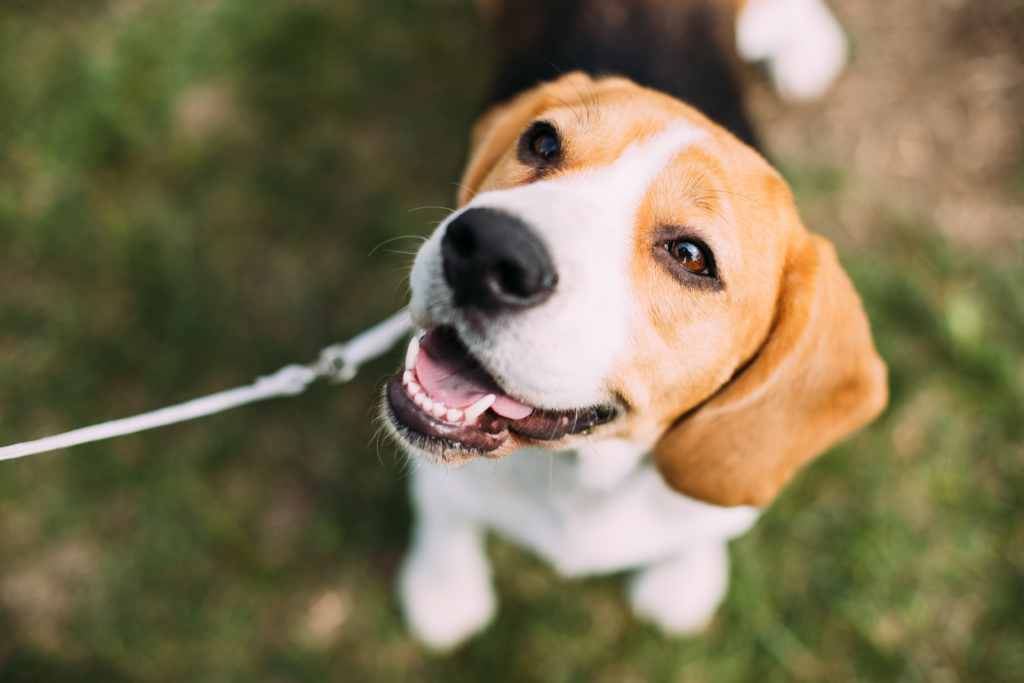
What you’ll need:
- A clicker or cue word such as “Yes!” that your dog already understands
- 6 ft leash. You want the leash to be long enough that the dog can make mistakes. However, I dislike retractable leashes because they don’t help your dog learn where boundaries are.
- A treat bag! This one is my favorite because it has magnetic closure for easy access, two separate treat compartments, and side pockets that are big enough to fit my phone & keys.
- Really high value treats! Do not use kibble for this. You want the treats to be more interesting than the distractions on the walk. I like using tiny, soft treats that don’t require much chewing since you’ll be offering them while moving.
- Patience!! Do not attempt a training session when you’re in a rush or already frustrated.
Teaching your dog to heel:
Get yourself ready: Start with your dog on leash in a sit on your left side. Hold a small supply of treats in your left hand and the leash in your right hand. Remember to give treats with your left hand so that the dog doesn’t learn to cut in front of you for a reward. The leash should always remain loose! Your dog will be learning to pace themselves rather than you holding them in place.
Choose a phrase for movement: Decide on a phrase you will use to ask your dog to start moving. I personally say “Let’s go!”, but use whatever phrase suits you.
Get your dogs attention: Ask your dog to focus on you, and treat them when they do.
Begin: Say “let’s go” and use the treat hand as a lure in front of your dogs nose to keep them right at your side. Take 3 steps with them by your side, and reward with a treat. When you feel like your dog is understanding the game, start saying “heel” as you start walking.
Practice: Spend time practicing this! Work up to being able to take 10 steps in a perfect heel. Once your dog is solid on 10 steps a few times in a row, they’re likely ready to move outside to the yard.
Every time you increase the distraction level you need to take a step back in difficulty.
Move outside: Remember- you want your dog to be successful! Since you’ve moved outside, go back to luring for 3 steps then offering a treat. When this seems easy for your dog, slowly increase to 10 steps again.
Phase out the lure: Once your dog has mastered 10 steps, it’s time to stop luring them with treats in front of their nose! Reward your dog for sitting next to you, then say “Let’s go!” and “heel”. Slowly try to increase the amount of steps you can take with your dog in a perfect heel position. If you sense your dog is losing focus try talking to them to keep their attention. You want to reward your dog for checking in with you, so offer a treat every time they make eye contact. Try to work up to being able to keep your dog in a heel for a full minute between treats.
Practice! If your dog is used to pulling you on leash you’ll likely need to spend a few days practicing heeling in your yard. They’re learning a new skill.
Remember to progress slowly! Behavior change is hard and takes time.
I suggest keeping training sessions short (~20 minutes twice a day) so that neither you or your dog is overwhelmed or frustrated.
If your dog tries to sniff or pulls sideways while they’re heeling say “leave it” and use the slightest amount of leash pressure (like you practiced in leash pressure training) to guide them back to you. Reward them every time they return to your side. Remember, pulling no longer gets your dog to what they want.
If they try to pull in front of you say “let’s go” and turn to walk in the other direction. Reward them when they come with you! This will help your dog to understand they need to be next to you paying attention. Teach your dog that you might change direction at any second, and awesome things happen when they follow.
I don’t suggest adding in loose leash walking until your dog has mastered one full minute of heeling. It takes more effort & mental capacity for your dog to learn two skills, so just focus on this one for now! Take sniff and play breaks between heeling sessions to keep it fun.
Once your dog has mastered a minute of heeling easily in your yard, slowly progress the distraction levels of where you’re walking. Take them to a quiet street or path without other dogs to start (the new smells will be distracting enough). Remember- when you increase the level of distraction take a step back in other difficulty. I usually suggest going back to rewarding your dog for 10 steps with each new walking environment. Your dog will likely learn quicker and quicker in each new setting, so increase the difficulty at their pace. Once your dog can heel for a minute you’re ready to add in loose leash walking instead of stationary sniff/play breaks.
Teaching your dog to loose leash walk:
Once your dog has learned the basic rules of heeling, it’s time to add in loose leash walking!
Again, I define loose leash walking as the dog being allowed to go anywhere within the boundaries of their leash. If I cannot easily hold the leash with one finger I don’t count it as loose leash walking. There should be no leash tension!
If your dog wants to sniff during loose leash walking- stop and let them! I do not allow pulling, but otherwise loose leash walking provides freedom to be a dog. Walks SHOULD be enjoyable for your dog too.
How to teach your dog to loose leash walk:
Have your dog sit at your left side and again say “Let’s go” to get moving then immediately follow it with saying “Ok!” and point in front of you. Your dog will likely hesitate a bit since they’re used to heeling. Keep walking and allow your dog to slowly move away from you. If they stop to sniff something, let them! If the sniff lasts too long say their name followed by either “Let’s go” or “Leave it” and reward them with a treat when they start walking again.
It’s valuable to practice transitioning in & out of heeling/loose leash walking. While the dog is learning I make it easier by putting them into a sit between transitions. “Let’s go” always tells the dog I want movement, then the “Heel” or “Ok” communicates boundaries of where they should walk. Consistency is incredibly important for dogs so make sure you use your words properly.
Your dog will be enticed by more smells and freedom during loose leash walking, so keep in mind that it can be a difficult skill to learn.
A few tips:
- You still want to have a no-pulling allowed policy. Be careful that you don’t accidentally reinforce pulling by letting your dog drag you to a smell. Dogs earn their freedom on walks by being polite on leash.
- You want your dog to want to check in with you and have awareness of where you are. You should notice them looking up at you more since practicing “focus” and heeling. Keep that going! Give your dog a treat every time they look up at you without being cued.
- Watch your dogs body language carefully while loose leash walking. Most dogs have a “tell” before they pull. You can often see their eyes lock in on something or their ears point downwards. If you notice these, say “let’s go!” and turn the opposite direction before they pull you. Reward your dog for following you in the new direction! The best time to correct pulling is before it even happens.
- If a distraction unexpectedly comes up during training try to put distance between it and your dog. This could mean crossing the road if you see another dog or turning to walk the opposite direction. If your dog seems very distracted get them to sit and practice focus work (with a treat for every focus). Sometimes your dog just needs a break!
- If you find there’s a spot that smells sooo amazing your dog can’t help but pull to it, tell them to leave it and use a treat to switch directions. Then turn and try it again! If they still can’t help but pulls towards it the second time, instead put them in “heel” and use a treat to lure them past. It’s ok to make mistakes, just don’t reward pulling by giving in.
- Slowly increase the time and distraction levels of where your dogs is loose leash walking. Remember- build up the skill slowly! You want opportunities to reward the dog for making the right choices.
Both you & your dog deserve for walks together to be enjoyable.
It can take time to undo the behavior of pulling on the leash, but it’s well worth the effort. Just imagine: in one month you can be confidently taking your dog on a walk with no pulling! How amazing would that be?
Please let me know in the comments below when you’ve had success with teaching your dog loose leash walking!
Happy training 🙂
Disclosure: Happy Hounds uses affiliate links. Purchasing with these links will not cost you any extra, but I get commissions for purchases made through these links. Affiliate links help me to continue to offer free resources & blog posts. I would love if you used them!
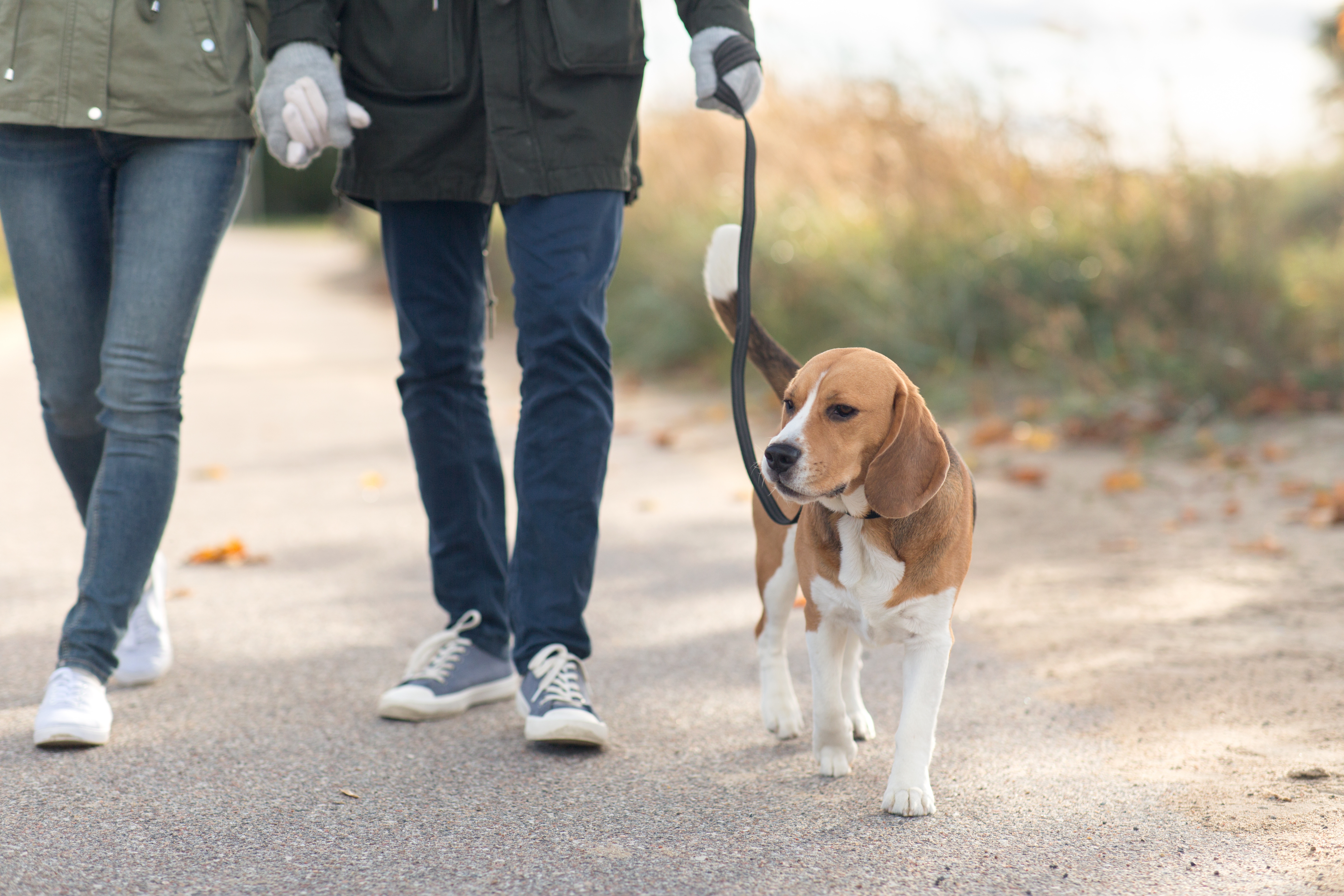

+ show Comments
- Hide Comments
add a comment